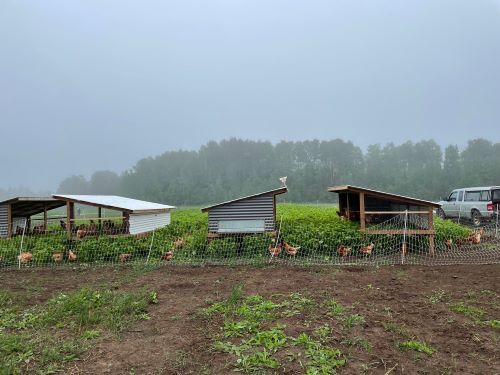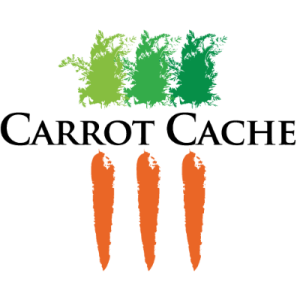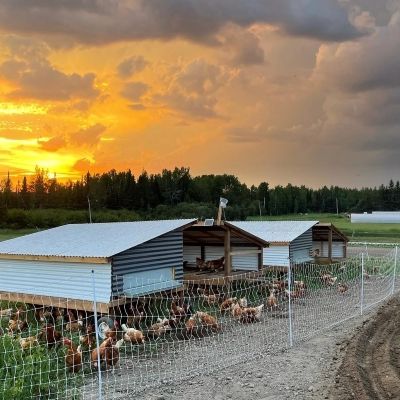Brendan and Marcelle of Sleepy G Farm near Thunder Bay designed and implemented a system of integrating a flock of 100 layer hens into an organic vegetable crop rotation in order to accomplish three main objectives:
- Use the hen manure as a major fertility input on a field in the year prior to a heavy feeding vegetable crops.
- Aggressively add biomass to the soil while simultaneously stimulating nutrient cycling via highly active soil microbiology.
- Significantly reduce weed pressure on a field through a coordinated grazing and seeding schedule.
The project is based on a 143-day rotation that grazes 100 layer hens on a field 0.70 acres in size (400’ x 70’). At the onset of the season the field is seeded to a 12 species mix of annual plants that include both cool and warm season grains, legumes, and broadleaf crops. The field is divided into 4 equal blocks and uses electric netting to contain the hens to one block for 18 days at a time. Four chicken tractors provide shade, shelter, and nest boxes, and are easily moved by a single person every three days in order to evenly distribute manure across the grazing area.

As the hens move into a fresh grazing block the area from which they came is lightly tilled and re-seeded to the same mix. Overhead irrigation is used to achieve rapid germination. With warm summer soil and fresh fertilizer the second crop grows very rapidly! The hens graze off the second crop as they rotate back across the field. Once the field has been grazed twice the soil is again lightly tilled and seeded to winter rye by mid-September in order to anchor soil through the winter and to reduce nutrient leaching during spring melt.
In the spring the rye rapidly resumes growth by taking advantage of the latent fertility, and it is ploughed under in early June and covered with silage plastic which heavy-feeding cucurbits are transplanted through.
The following spring the field is planted to carrots, which benefit greatly from two consecutive seasons without a single weed getting established, and there is more than enough residual fertility to produce a yield of 30,000 lbs per acre.
After three seasons of using this system it has proven to be the cornerstone of the 6-year crop rotation in use on the farm. In addition to producing exceptional quality eggs and providing outstanding living conditions for the hens, feed costs are reduced by 1/3 during the grazing season, and the benefits to both soil structure and fertility plus the weed control it provides make this project a big win for Sleepy G Farm.
EFAO would like to thank all those who submitted nominations for the prize for their hard work and innovation! Thanks also to Carrot Cache, for providing the funding for this generous prize year after year.

